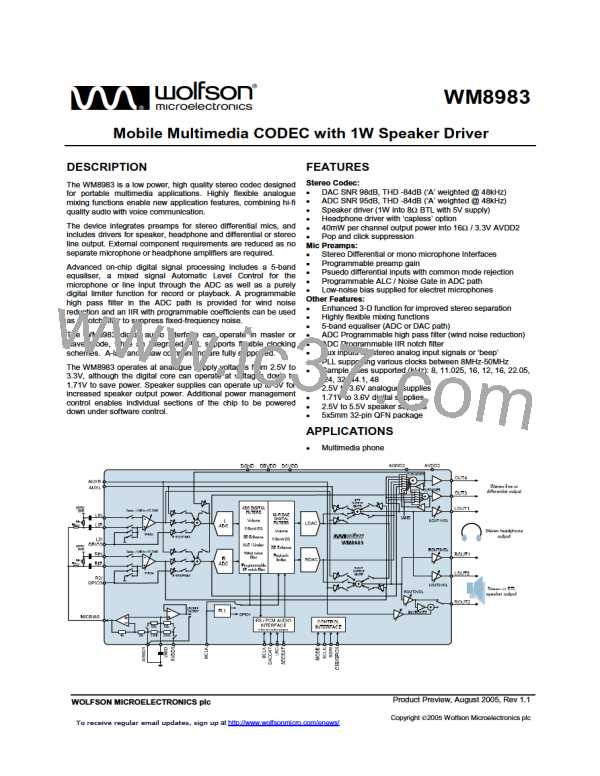Product Preview
WM8983
TERMINOLOGY
1. Note the full scale input level is proportional to AVDD1 and so will scale accordingly.
2. Hold Time is the length of time between a signal detected being too quiet and beginning to ramp up the gain. It does
not apply to ramping down the gain when the signal is too loud, which happens without a delay.
3. Ramp-up and Ramp-Down times are defined as the time it takes for the PGA to sweep across 90% of its gain range.
4. All hold, ramp-up and ramp-down times scale proportionally with MCLK
5. Signal-to-noise ratio (dB) – SNR is a measure of the difference in level between the full scale output and the output
with no signal applied. (No Auto-zero or Automute function is employed in achieving these results).
6. Dynamic range (dB) – DR is a measure of the difference between the highest and lowest portions of a signal.
Normally a THD+N measurement at 60dB below full scale. The measured signal is then corrected by adding the 60dB
to it. (e.g. THD+N @ -60dB= -32dB, DR= 92dB).
7. THD+N (dB) – THD+N is a ratio, of the rms values, of (Noise + Distortion)/Signal.
8. Channel Separation (dB) – Also known as Cross-Talk. This is a measure of the amount one channel is isolated from
the other. Normally measured by sending a full scale signal down one channel and measuring the other.
9. The maximum output voltage can be limited by the speaker power supply. If SPKBOOST is set then AVDD2 should
be 1.5xAVDD to prevent clipping taking place in the output stage (when PGA gains are set to 0dB).
PP Rev 1.1 August 2005
w
9

 WOLFSON [ WOLFSON MICROELECTRONICS PLC ]
WOLFSON [ WOLFSON MICROELECTRONICS PLC ]